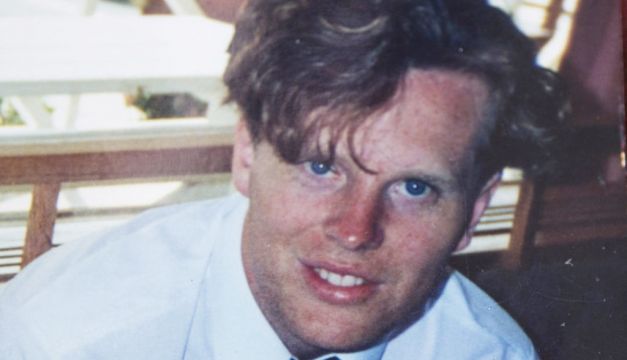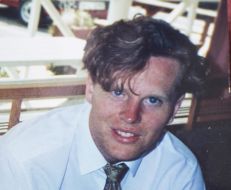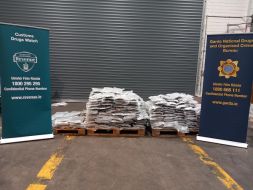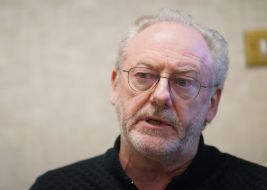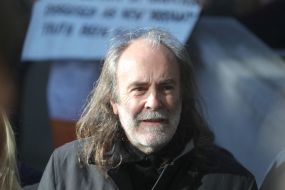A report produced by a UK police expert has raised serious questions about the State’s handling of the 1996 discovery of the remains of Limerick man Denis Walsh Jr and eventual identification 25 years later.
The 35-page preliminary report, which was commissioned by Denis Walsh’s father, Denis Walsh Sr (83), is critical of how gardaí and the Forensic Science Laboratory handled the case.
Denis Walsh Sr has instructed a solicitor and senior counsel to sue the State for what he claims were serious shortfalls in the investigation into the discovery of his son’s remains.
The 23-year-old was reported missing by his family on March 10th, 1996. However, unknown to his family, who were searching for him for a further 25 years, Denis Jr’s partial remains were recovered by gardaí 28 days after he went missing.
The remains, which included a partial skull with flesh and hair, torso, arms, and hands, were found on the shoreline at Inis Mór off Galway Bay, on April 7th, 1996, but they were not identified until February 2021.
Mr Walsh’s parents had been in Galway the day before their son’s remains were found and had handed out flyers of their missing son at Garda stations.
The police expert’s preliminary report supports Denis Walsh Sr’s view that, based on available evidence, his son’s remains should have been identified sooner.
The remains were taken to University Hospital Galway for a postmortem on April 8th, 1996 which ruled out foul play and a cause of death was not determined.
Denis Jr’s then-unidentified remains were stored at the hospital’s mortuary for 18 years before they were buried in a communal grave at Bohermore, Co Galway, in March 2014.
Crime scene management
The expert report offers a view that from the outset, when the remains were found, gardaí did not consider the possibility of homicide.
“It would appear that, other than a search, no form of crime scene management was undertaken,” the report states.
It adds that there is no known evidence that gardaí took photographs of the remains either at the scene or at the mortuary in 1996.
The report suggests that “the required standards of crime scene management were not met when the corpse was discovered, and forensic potential may have been squandered that could have assisted in the identification of the deceased”.
“It is very difficult to understand how Gardaí failed to link the discovery of the corpse with Mr Walsh (Jnr), because of the timescales and geographical proximity.”
The report noted that it appeared that gardaí “did not routinely check the outstanding missing persons for the area”.
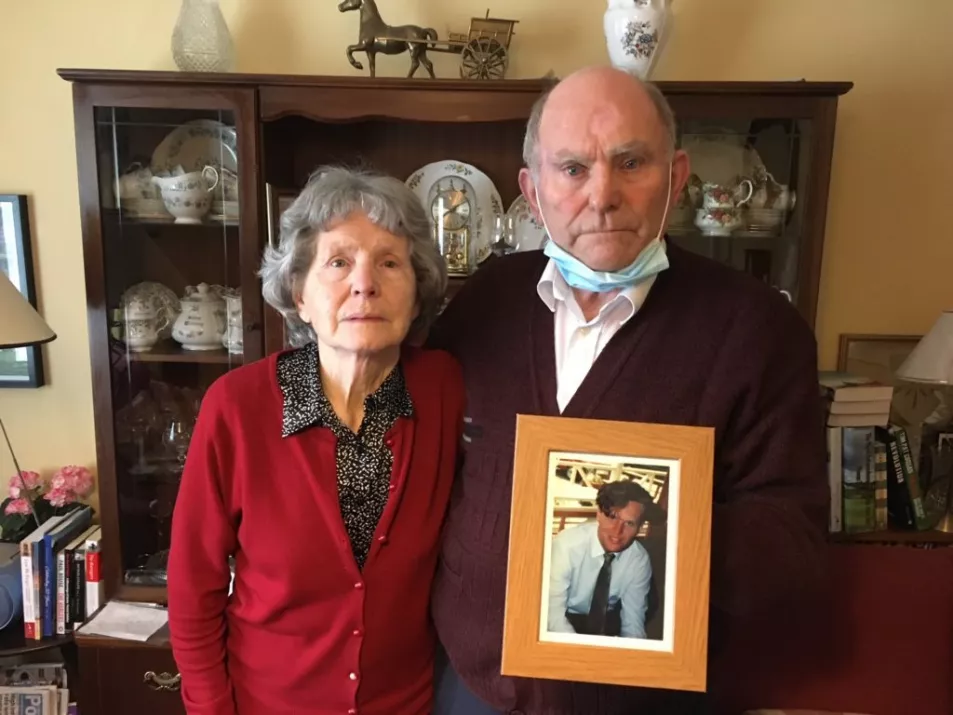
Postmortem notes mention the remains are that of “male, aged 25 to 35 years, with brown graying hair, who had been in the sea for four to six weeks”.
The report suggests that if “elimination features” – including monitoring recent missing person reports – were checked, “it is likely that the corpse may have been potentially identified as Mr Walsh (Jr)”.
Gardaí have said that they circulated details of Denis Walsh’s missing person case and that there were a number of appeals for information in the media.
However the report suggests that if Denis Walsh Jr’s missing person case was circulated to Garda stations nationwide, “there is no acceptable reason why Mr Walsh Jr should not have been immediately linked to the discovery of the corpse on Inis Mór on 7th April 1996”.
“Even if provisional linkage was made, it would have accelerated the DNA identification process when the technology became available in the Republic of Ireland.”
A letter from the then Minister for Justice Nora Owen to the late Labour Party TD Michael Ferris in May 1997 said that Garda authorities confirmed that they had completed a missing person’s report for Denis Walsh, including circulating the initial report by telex and via national and local media.
The letter said Interpol had also been informed and that local enquiries were made of friends and at locations familiar to Mr Walsh Jnr.
Minister Owen said gardaí informed her that a limited search of the River Shannon was also undertaken by the Limerick Marine Search and Rescue Unit.
Tissue samples were taken from Mr Walsh’s body in 2007 and forwarded to the Forensic Science Laboratory.
No explanation
However the expert report found “no explanation for the delay of 11 years in securing these samples or specifically what they were”.
Gardaí have said the bodily samples were examined on dates in July 2008, March 2011 and June 2017, with negative results.
Gardaí eventually took DNA saliva samples from Denis Walsh Jr’s parents in February 2011, 15 years after he had disappeared and his unidentified remains recovered.
It is unclear how an examination of Mr Walsh’s tissue samples in July 2008 would have identified him as DNA was not taken from Mr Walsh’s parents Denis Sr and Mary until 2011.
The report reiterates what was heard at the April 2021 inquest into Mr Walsh’s death, that “the national forensic laboratory failed to compare their samples with that garnered from their son in 2007 because of apparently insurmountable operational challenges, which as the Coroner admits was a ‘missed opportunity’”.
Inquest
Galway West Coroner Dr Ciaran MacLoughlin said at Mr Walsh Jnr’s inquest last year, that in 2007, there was “no (DNA) database and the software was not available to operate a search” of unidentified remains.
Staff deficits in the forensic science laboratory meant this was not possible, Dr MacLoughlin said.
“Each sample would have to be paired individually, which is an enormous time-consuming operation and there was not a sufficient number of staff available to conduct a search of this magnitude,” Dr MacLoughlin told the inquest.
He said a database of DNA samples, taken from unidentified bodies, was set up in 2015 “but it only compared with samples taken from living persons after 2015”.
“There was no look back for comparison with samples taken prior to 2015” and so the tissue samples taken from Mr Walsh’s body in 2007 were “missed”.
“Had the look-back included existing DNA samples, the identity of (Mr Walsh’s) remains would have been discovered.”
Dr MacLoughlin recorded an open verdict at the inquest, and he recommended that all human remains found in the future would be identified “in a timely fashion”.
He said this should be done through the creation of a “list of all human remains in the custody of Coroners in the State, to be circulated among Coroners, Gardaí and the Forensic Laboratory”.
He recommended this list should be “updated every three to six months, or with the use of modern communications can be updated immediately”.
“It should be mandatory that DNA samples be taken from all unidentified remains as a national policy and maintained on a database in the National Forensic Laboratory,” Dr MacLoughlin said.
Gardaí said Mr Walsh Jnr’s remains were identified in 2021 following “advances” in DNA technology.
They said the remains could not be identified through dental records or fingerprinting because they said the remains were decomposed and did not include teeth.
Gardaí who attended the scene in 1996 provided statements at Mr Walsh’s inquest in 2021.
One of the officers said Mr Walsh’s remains included two arms and two hands, however the other Garda stated there was only one arm.
Both gardaí said a partial skull was recovered, however the “clear recollection” of a doctor who was called to the scene, was that there was a “torso with no head attached”.
Justifiable questions
The gardaí wrote a letter to the Walsh family dated February 10th, 2021, acknowledging the family had been left with “lots of justifiable questions on how it took so long to identify Denis”.
The letter, signed by a Garda Inspector, said that a garda who attended the scene had remarked that the remains were “treated with dignity, the body was blessed, and a doctor attended the scene”. However it did not mention if gardaí had sealed off the scene or if they treated it as a potential crime scene.
The letter writer added: “I can assure you that foul play was not suspected, as if it was, the Gardaí in Galway would have been notified at the time and a criminal investigation opened. This was not the case.”
Murder claim
It has emerged that last year Denis Walsh Sr passed to gardaí a letter he received in the post which alleged that Denis Jr was murdered by a named man at a named location.
Mr Walsh Sr said Gardai informed him that they had spoken to an individual in relation to the letter but that their investigation had run cold.
When gardaí were asked about this, a spokesman said gardaí “do not comment on specific lines of enquiry”.

The garda spokesman added: “Gardaí in Limerick continue an active missing persons investigation into this case”.
Case file
Gardaí have refused a request from Denis Walsh’s solicitor seeking the garda investigation files into Denis Walsh’s missing persons case, as well as the garda filed on the recovery of Denis Walsh Jr’s remains.
Gardaí cited GDPR for the refusal, stating that they could not release the information because Denis Jnr is dead and so is not in a position to agree to the disclosure.
“I find this absolutely disgraceful, particularly after everything that my family have gone through. I want answers, I want answers for Denis and I want answers so that no other family goes through what my family has gone through,” Denis Walsh Sr said.
